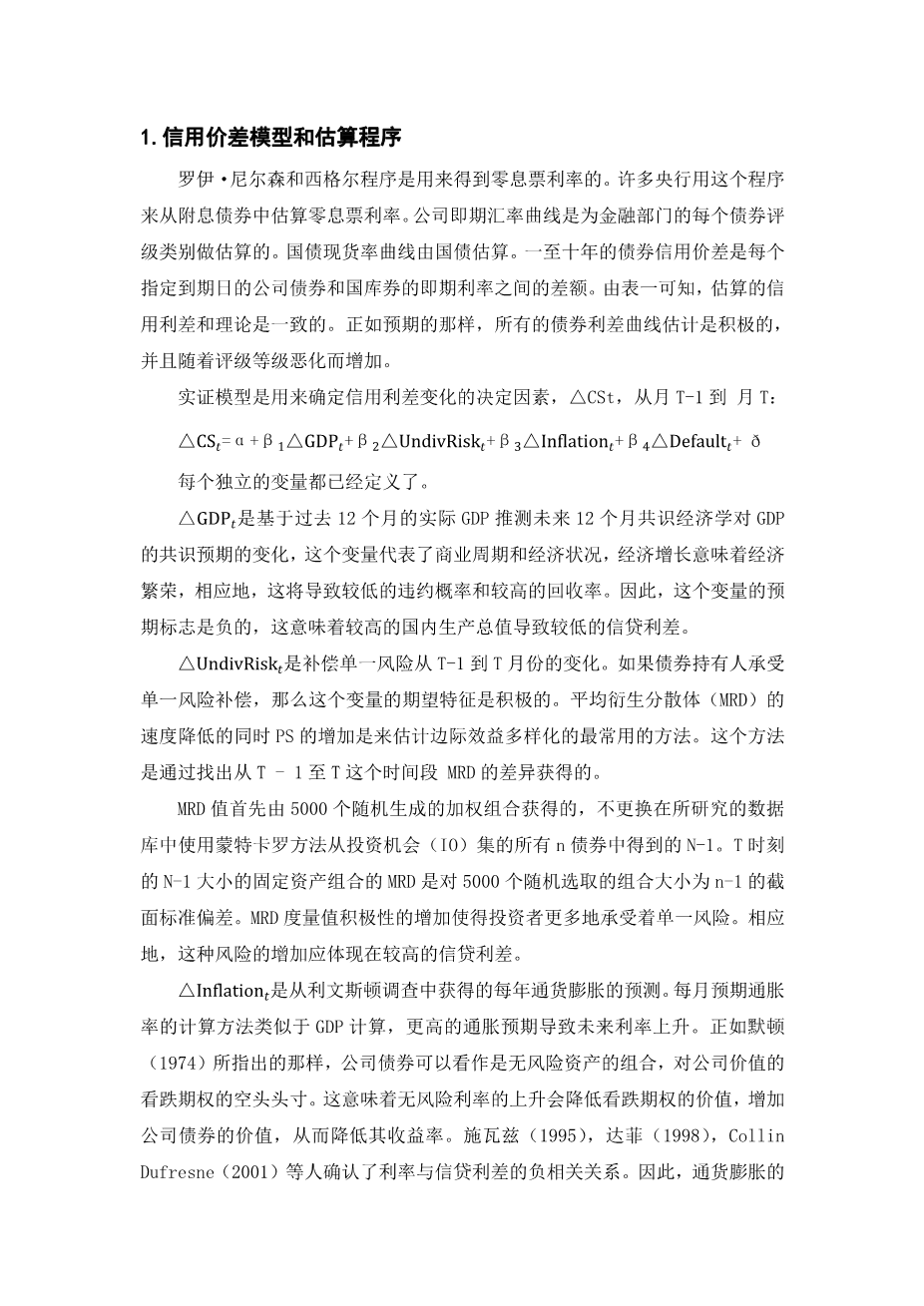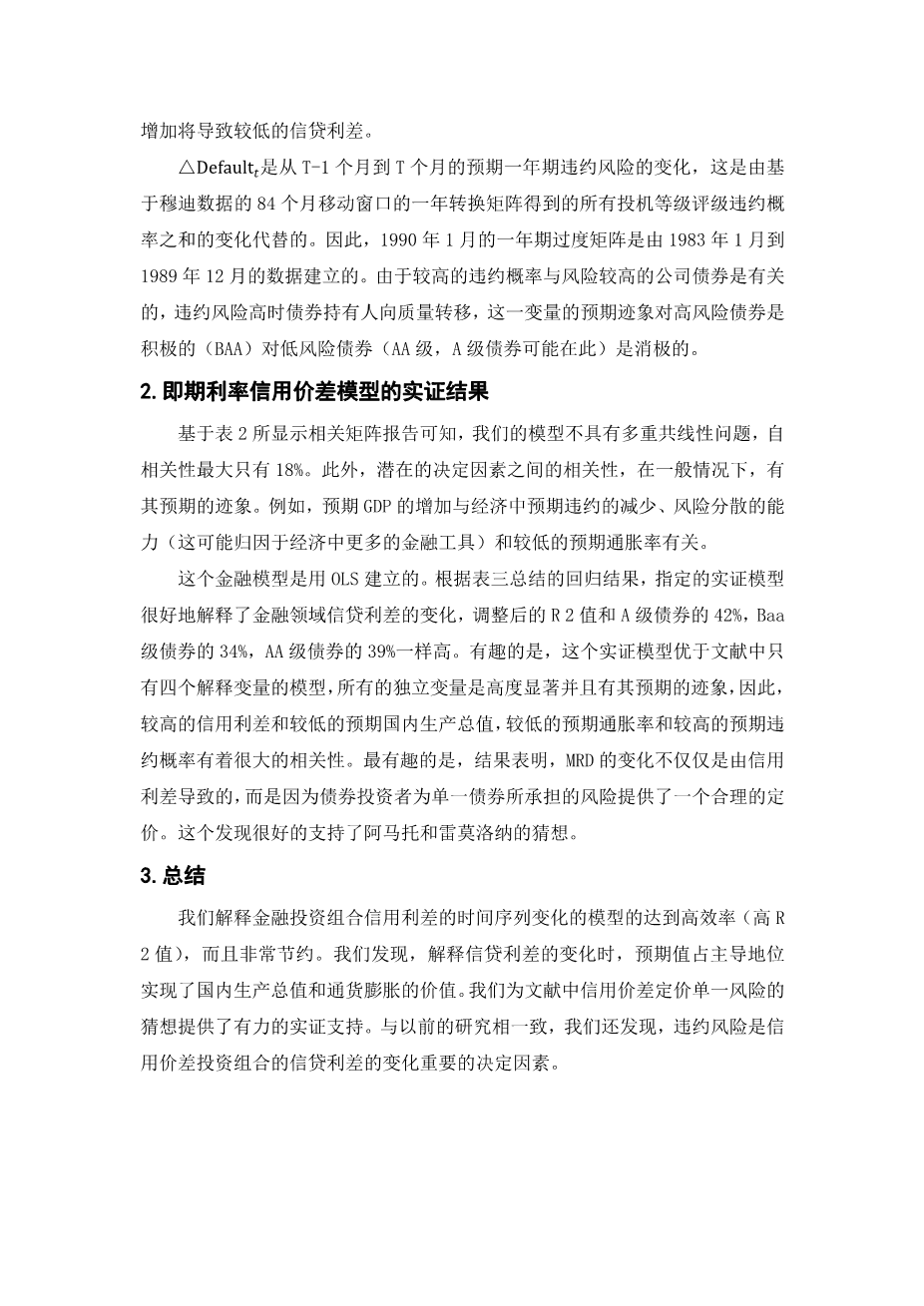Determinants of credit spread changes for the financial sector
- The empirical credit-spread model and estimation procedures
The Nelson and Siegel (1987) procedure is used to derive the zero-coupon spot rates. This procedure is used by many central banks to estimate zero-coupon spot rates from coupon carrying bonds. The corporate spot rate curve is estimated for each of the three bond-rating categories of Aa, A, and Baa for the financial sector. The treasury spot rate curve is estimated from the treasury bonds. The credit spreads for maturities one to ten years are then calculated by taking the difference between the spot rates for corporates and treasuries for each designated maturity. The resulting credit spreads estimates, which are summarized in Panel A of Table I, are consistent with the theory. As expected, all the empirical bond-spread curve estimates are positive and increasing as the rating class deteriorates.
The following empirical model is used to identify the determinants of changes in credit spreads, DCSt, from month t - 1 to month t :
△=α △ △ △ △ ð
Where each of the independent variables is now defined.
DGDPt is the change in the consensus expectations from consensus economics for GDP over the next 12 months when benchmarked against the actual GDP over the previous 12 months. This variable is a proxy for the business cycle and the state of the economy. Increasing GDP signifies greater prosperity in the economy. In turn, this results in lower default probabilities and higher recovery rates. Thus, the expected sign of this variable is negative, which implies lower credit spreads for higher GDP.
DUndivRiskt is the change from month t-1 to month t in compensated undiversified risk. If bondholders are compensated for bearing undiversified risk, then the expected sign of this variable is positive. The speed at which mean derived dispersion (MRD) diminishes as PS increases is one of the most common methods used to estimate the marginal benefits of further diversification (Campbell et al., 2001)[8]. This measure is obtained by taking the difference of MRD from month t -1 to month t.
The MRD values are first obtained for 5,000 randomly generated equal-weighted portfolios without replacement of size N-1 using a Monte Carlo approach from an investment opportunity (IO) set of all the N bonds in the studied database for month t. The MRD for a fixed portfolio of size N-1 for time t is then the cross-sectional standard deviation of the 5,000 randomly selected portfolios of size N-1 for month t. An increase in the positive value of this MRD metric exposes investors to more undiversified risk. In turn, this increase in risk should be reflected in higher credit spreads.
is the yearly inflation forecast obtained from the Livingston survey. Monthly expected inflation rates are computed in a way similar to the GDP computations. Higher expected inflation rates lead to higher future interest rates. As Merton (1974) argues, a corporate bond can be seen as a portfolio of a risk-free asset and a short position in a put option on the value of the firm, which implies that a rise in the risk-free rate should reduce the value of the put option, increase the value of corporate bonds and consequently reduce their yields. Longstaff and Schwartz (1995), Duffee (1998), and Collin-Dufresne et al. (2001) confirm the negative relationship between interest rates and credit spreads. Consequently, an increase in inflation should result in lower credit spreads.
DDefaultt is the change in expected one-year default probabilities from month t 2 1 to month t, which is proxied by the change in the sum of default probabilities of all speculative grade ratings in the one-year transition matrices for 84-month moving windows based on data from Moody’s[12]. Thus, the one-year transition matrix used for January 1990 is built using data for the period from January 1983 to December 1989. Since higher default probabilities are associated with riskier corporate bonds, the expected sign of this variable is positive for more risky bonds (Baa-rated herein) and negative for less risky bonds (Aa-rated and possibly A-rated bonds herein) as bondholders migrate to quality when default probabilities are higher.
- Empirical results for our empirical spot rate credit-spread model
Based on the correlation matrix reported in Table II for the financial sector, our model doe not have a multicollinearity problem since the maximum correlation is only 18 percent. Furthermore, the correlations between the potential determinants, in general, have their expected signs. For example, an increase in expected GDP is associated with a decrease in expected default in the economy, a higher ability to diversify risk (which could be attributed to more financial instruments in the economy), and a lower expected inflation rate.
The models are estimated for the financials using OLS[13]. Based on the regression results summarized in Table III, the specified empirical model explains the changes in credit spreads for the financial sector very well. The adjusted R 2 values are as high as 42 percent for the A-rated bonds, 34 percent for the Baa-rated bonds, and 39 percent for the Aa-rated bonds. Interestingly, this empirical model outperforms the models in the literature with only four explanatory variables. All of the independent variables are highly significant and with their expected signs[14]. Thus, higher credit spreads are significantly related with lower expected GDP, lower expected inflation, and higher expected default probabilities. Most interestingly, the findings strongly suggest that changes in MRD are not only priced in credit spreads but that they provide a reasonable proxy for the priced undiversified risk borne by bond investors. This finding provides support for the conjecture of Amato and Remolona (2003).
- Conclusion </
剩余内容已隐藏,支付完成后下载完整资料


英语译文共 2 页,剩余内容已隐藏,支付完成后下载完整资料
资料编号:[486522],资料为PDF文档或Word文档,PDF文档可免费转换为Word


